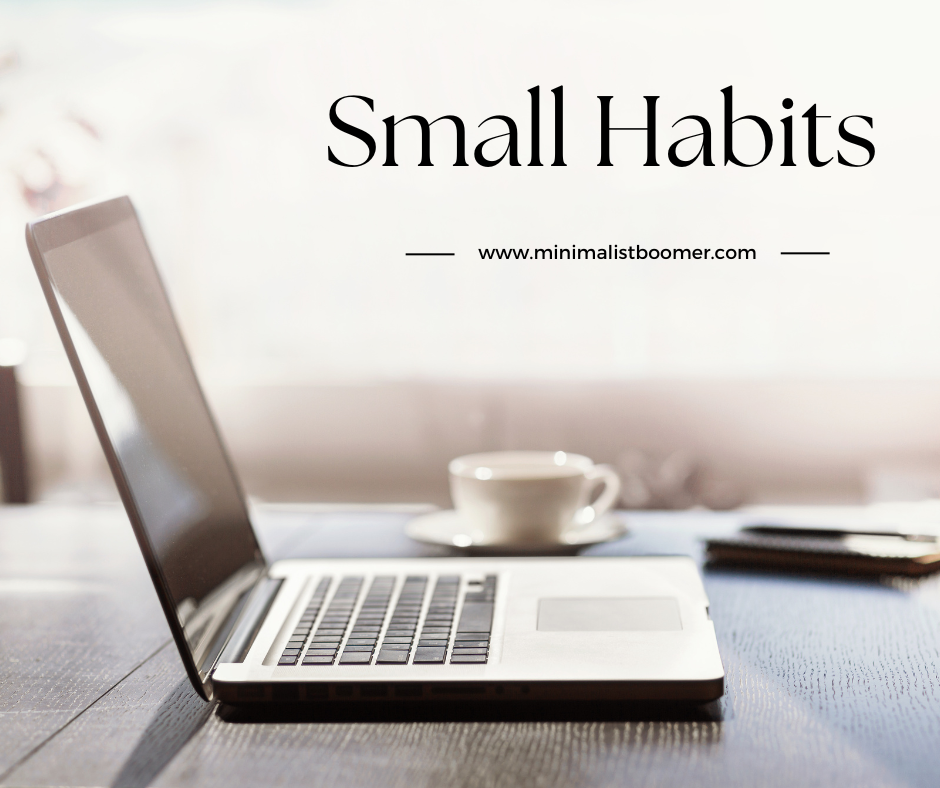Downsizing your home can be both an overwhelming and an exciting time, and it’s one that generally comes with a big lifestyle change. People downsize for many reasons; perhaps they no longer need as much space, they want to save money, or they’re entering a new phase of life and they want to change their living situation.
Whatever your reason, this piece may help you learn how to downsize in an organized and stress-free way, with tips and tricks on everything from how to make decisions about what to keep and what to declutter and how to deal with sentimental keepsakes.
“Much of what we acquire in life isn’t worth dragging to the next leg of our journey. Travel light. You will be better equipped to travel far.” ― Gina Greenlee

Downsizing is moving from a larger house to a smaller one. It typically involves getting rid of possessions that are no longer needed or that will not fit into the new place and it can be a big lifestyle change.
Dave and I are good examples of boomers who downsize. First, we moved into a smaller home in the same town, after our children moved out. About three years later, we moved into an even smaller home in another state when we retired. We made these two moves over the course of about seven years. I hope you can learn a few things from our experience.
The key to downsizing is to start early, pace yourself, and remain focused, and to remember that what may seem like tedious and time-consuming tasks will save you time and effort once you get to your new home.
Packing your home for the move
1. Get an early start
It’s a good idea to reset your mindset and adjust the way that you think about your current home and belongings as soon as you decide that downsizing your home is in your near future.
This doesn’t mean you need to start packing and organizing right away, but you can start making lists of everything you have and stop purchasing items you know you don’t need and probably won’t ever use. Use this as an opportunity to begin to declutter as the seasons change.
This way, you can begin to prepare yourself and your home for the process of downsizing and you won’t be under a lot of stress when it’s time to really begin. In my experience, it was a lot of work to sell a home, downsize, and buy a new home within a very short period of time. We did it all in about 45 days. If you have the time, I strongly recommend that you pace yourself.

2. Know what you have
While it may seem tedious, taking inventory of everything that you have is an important pre-packing step. There may be possessions you forgot you had, things that are broken and need to be thrown out, or multiples that have accumulated over the years.
This will also give you an idea of how many boxes you will need and how much time you should give yourself for the packing process. This is also a good time to measure furniture to see what will fit inside your new home and what won’t. While you’re measuring, also consider the bulkiness of the pieces of furniture you plan to move, especially if the rooms are smaller.
For example, we moved a very nice couch with a pull-out bed in it for use in a guest bedroom. We measured carefully and although it fit, it was very bulky and just wasn’t right for the room. By the time the cushions were removed and the queen mattress was pulled out, the room felt “full.”
I want our guests to have plenty of space and to be comfortable so we donated that pull-out bed couch to a needy family and replaced it with a Murphy bed, or wall bed, which is only pulled down when guests are visiting and it is the perfect solution for us.
If we had considered how much space that pull-out bed really consumed and how bulky it was, we never would have moved it from California to Arizona.
3. Sort and declutter
To stay organized and focused during what may seem like a very overwhelming task, come up with categories to sort everything. For example, set up separate boxes for items you will keep, donate to charity, toss, sell, or give to other people.
This way, as you go through all your possessions, you can ask yourself which of the categories the item falls under, then either place it inside the designated box or, if it’s too large, place a label on it.
4. Oh, those sentimental items

Going through your things and deciding what to keep and what to toss can be challenging and emotional, especially when it comes to sentimental items and family heirlooms.
There are several ways to approach sentimental items; if you have boxes and boxes of old photos but don’t have the room to keep them all, digitize them. Keep the originals that have most meaning and value to you if you must, then go through and scan all the rest.
This way, you can still enjoy all your pictures, they just take up much less space. The same applies to postcards, greeting cards, and other things, like concert tickets or playbills, that you may have kept as souvenirs.
As for items such as a piece of furniture or an accessory like a statue or a painting, evaluate how much it means to you personally and whether you would have it out on display or if it would just sit in a box stored away.
If the answer is the latter, consider giving it to a family member or passing it down to a child or grandchild. This way, the item stays in the family, and you can still see it, just not necessarily in your own home.
5. Getting rid of stuff
Even when it comes to items that are non-sentimental, deciding what to hold on to and what to toss can be difficult and overwhelming. To help you with the process, there are a couple of questions you c an ask yourself as you evaluate each item.
Have you used it in the past year? Do you see yourself using it in the future? Do you have space for it in your new home? Do you have duplicates of it? Is it in working order, or is it broken?
Thoughtfully considering these questions will help you remain focused and make the hard decisions easier. I thought I did a pretty good job of this, but the fact is, I still let that “what if I need this some time in the future” thinking paralyze my decision-making process at times. Consequently, we still moved a lot of things we had to get rid of once we got here, which is both expensive and time consuming.
6. Don’t do it all at once
Under most circumstances, downsizing is a process and should be treated as such. You didn’t collect all your belongings in a week, so expect that it will take longer than a week to go through them.
Giving yourself time is important so that you can keep your momentum going before you even get to your new house, and so that you can stay organized and do as much sorting and purging as is necessary.

No Regrets
Devise your plan and divide tasks over a period of time. Recruit help if need it. Others may not be able to help you decide what to keep and what to donate, but they can help you clean, wrap fragile items in bubble wrap, carry boxes from room to room, or prepare items for donation.
If your move to downsize also involves a major lifestyle change, such as becoming an empty nester or retiring and moving into a much smaller home, considering your new lifestyle will help you make hard decisions.
For example, if you don’t need more than one vehicle, you may want to consider selling one of your cars. Now that we are retired, we realize that we don’t need two cars. This saves you time, money, and a opens up a great deal of space in your garage.

As long as you give yourself plenty of time and get started early, remain focused and organized throughout, and are willing to get rid of everything that takes up too much space, the downsizing process can be surprisingly smooth and simple.
Enjoy the journey!




